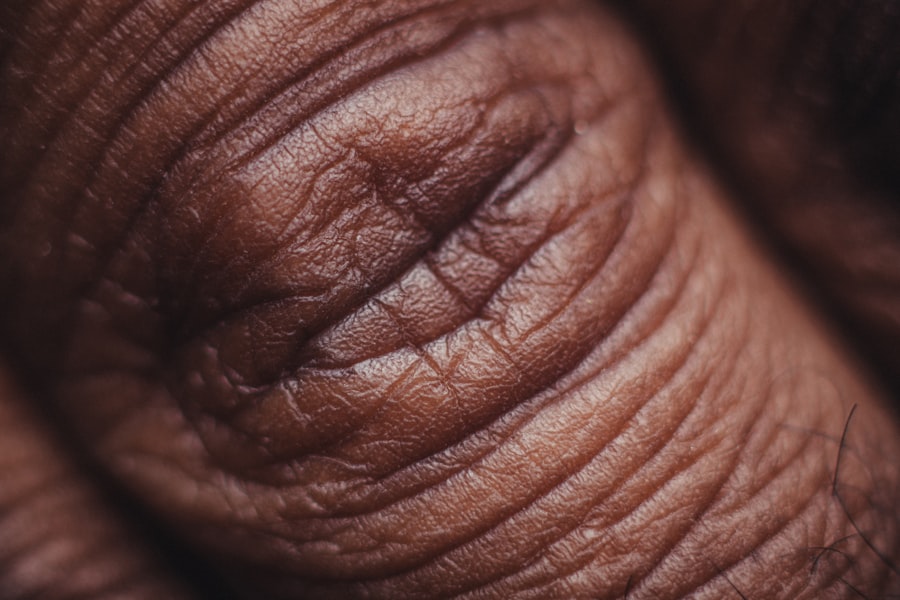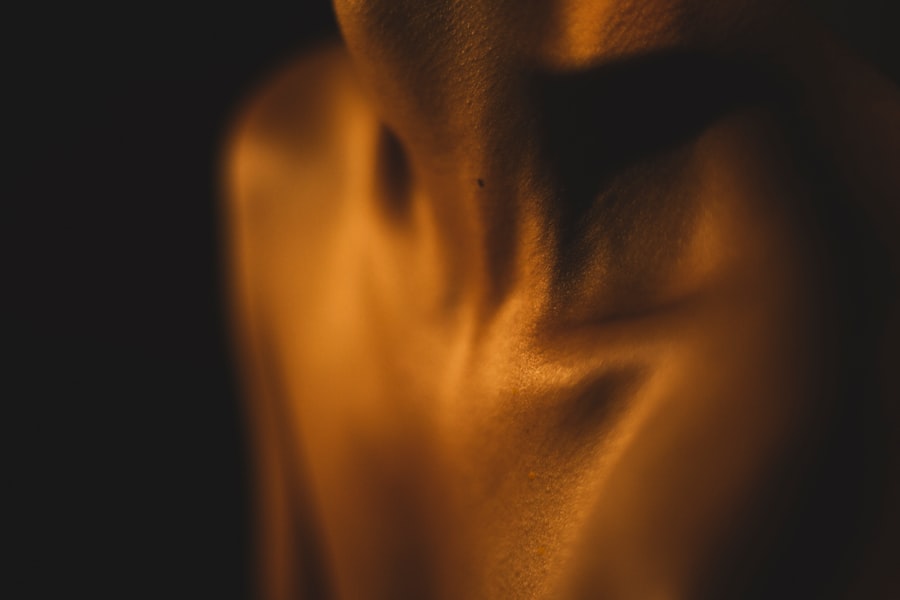Laser hair removal has emerged as a popular choice for individuals seeking a long-term solution to unwanted body hair. This innovative technique utilizes concentrated beams of light to target and destroy hair follicles, effectively reducing hair growth over time. As you consider this method, it’s essential to understand not only how it works but also the importance of adhering to post-treatment care instructions.
The allure of smooth, hair-free skin is undeniable, but achieving the best results requires diligence and knowledge about the process. The procedure itself is relatively quick and can be performed on various areas of the body, including the face, legs, underarms, and bikini line. Many people are drawn to laser hair removal because it offers a more permanent solution compared to traditional methods like shaving or waxing.
However, while the initial treatment may seem straightforward, the journey doesn’t end there. Understanding the nuances of post-treatment care is crucial for ensuring that you reap the full benefits of this advanced hair removal technique.
Key Takeaways
- Laser hair removal is a popular method for long-term hair reduction and removal.
- Following post-treatment care instructions is crucial for achieving the best results and minimizing potential side effects.
- Shaving after laser hair removal can lead to potential consequences such as skin irritation and reduced effectiveness of the treatment.
- There is an increased risk of irritation and ingrown hairs if proper post-treatment care is not followed after laser hair removal.
- Proper hair maintenance after laser hair removal is essential for achieving long-term results and preventing regrowth.
The Importance of Following Post-Treatment Care Instructions
After undergoing laser hair removal, you may feel a sense of relief and excitement about your new hair-free skin. However, it’s vital to remember that your skin requires special attention during the recovery phase. Following post-treatment care instructions is not merely a suggestion; it is a critical component of the process that can significantly influence your results.
Your skin may be sensitive and vulnerable after treatment, making it essential to protect it from potential irritants and complications. Ignoring these guidelines can lead to adverse effects, such as increased irritation or even infection. For instance, your practitioner may advise you to avoid sun exposure for a certain period following your treatment.
This precaution is crucial because UV rays can exacerbate skin sensitivity and lead to pigmentation issues. By adhering to these recommendations, you not only safeguard your skin but also enhance the effectiveness of the laser treatment, ensuring that you achieve the smooth results you desire.
Potential Consequences of Shaving After Laser Hair Removal

One common question that arises after laser hair removal is whether it is safe to shave the treated areas. While shaving may seem like a convenient option for managing any regrowth, it can have unintended consequences if done too soon after treatment. The primary concern is that shaving can disrupt the healing process of your skin, which is still recovering from the laser’s effects.
This disruption can lead to complications that may hinder your overall results. Moreover, shaving can irritate the skin, especially if it is still sensitive from the laser treatment. You might experience redness, swelling, or even razor burn in the treated areas.
These reactions can be uncomfortable and may prolong your recovery time. It’s essential to give your skin adequate time to heal before considering any form of hair removal, including shaving. By doing so, you allow the laser treatment to work effectively and minimize any potential side effects.
Increased Risk of Irritation and Ingrown Hairs
| Factors | Impact |
|---|---|
| Shaving too closely | Increased risk of irritation and ingrown hairs |
| Using dull razors | Increased risk of irritation and ingrown hairs |
| Not exfoliating regularly | Increased risk of irritation and ingrown hairs |
Shaving after laser hair removal not only poses risks to your skin’s healing process but also increases the likelihood of developing irritation and ingrown hairs. When you shave over freshly treated skin, you may inadvertently cause micro-abrasions or irritate hair follicles that are still in a sensitive state. This irritation can manifest as redness, itching, or discomfort, detracting from the smooth results you hoped to achieve.
Ingrown hairs are another concern that can arise from shaving too soon after treatment. When hair follicles are disrupted by shaving, they may grow back into the skin instead of outward, leading to painful bumps and inflammation. This condition can be particularly frustrating for those who have undergone laser hair removal in hopes of reducing such issues.
To avoid these complications, it’s advisable to wait until your skin has fully healed before considering any form of hair removal.
Impact on Long-Term Results of Laser Hair Removal
The long-term effectiveness of laser hair removal can be significantly impacted by post-treatment choices, particularly when it comes to shaving. If you choose to shave too soon after your sessions, you may inadvertently interfere with the laser’s ability to target and destroy hair follicles effectively. This interference can lead to uneven results and may require additional treatments to achieve the desired outcome.
The goal of laser hair removal is to achieve a reduction in hair density over time; however, if you engage in practices that promote hair regrowth, you may find yourself needing more sessions than initially anticipated. To maximize the long-term results of your laser hair removal journey, it’s crucial to follow your practitioner’s advice regarding post-treatment care and avoid any actions that could compromise your results.
Tips for Proper Hair Maintenance After Laser Hair Removal

To ensure that you maintain optimal results after laser hair removal, consider implementing a few key tips into your post-treatment routine. First and foremost, patience is essential. Allow your skin ample time to heal before considering any form of hair removal or maintenance.
This waiting period will help prevent irritation and ensure that your skin recovers fully from the treatment. Additionally, consider using gentle skincare products on the treated areas during your recovery phase. Opt for fragrance-free moisturizers and soothing creams that can help calm any potential irritation.
Avoid harsh exfoliants or products containing alcohol, as these can exacerbate sensitivity and hinder healing. Keeping your skin hydrated and protected will contribute positively to your overall experience and results.
Alternative Hair Removal Methods to Consider
If you find yourself in need of hair removal options after undergoing laser treatment but are hesitant about shaving, there are alternative methods worth considering. One option is depilatory creams, which dissolve hair at the surface level without the need for shaving. However, it’s crucial to perform a patch test first to ensure that your skin does not react negatively to these products.
Another alternative is trimming with scissors or an electric trimmer designed for sensitive areas. This method allows you to manage any regrowth without risking irritation or ingrown hairs associated with shaving. Ultimately, exploring these alternatives can help you maintain a smooth appearance while allowing your skin the time it needs to heal properly after laser hair removal.
The Importance of Consulting with a Professional before Making Post-Treatment Decisions
In conclusion, navigating post-laser hair removal care requires careful consideration and consultation with a qualified professional. Your practitioner is equipped with the knowledge and expertise necessary to guide you through this critical phase of your treatment journey. Before making any decisions regarding hair maintenance or removal methods post-treatment, take the time to discuss your options with them.
By prioritizing professional advice and adhering to post-treatment care instructions, you set yourself up for success in achieving long-lasting results from laser hair removal. Remember that this process is not just about immediate outcomes; it’s about ensuring that you enjoy smooth skin for years to come. Embrace patience and diligence in your post-treatment care routine, and you will be rewarded with the beautiful results you desire.
If you are considering laser hair removal, it is important to understand the proper aftercare to ensure the best results. One common question is what happens if you shave after laser hair removal. According to a related article on InLaserHairRemoval.com, shaving after laser hair removal is generally safe and can help maintain the results of the treatment. However, it is essential to follow the specific guidelines provided by your technician to avoid any potential complications.
FAQs
What is laser hair removal?
Laser hair removal is a cosmetic procedure that uses a concentrated beam of light (laser) to remove unwanted hair. The laser targets the pigment in the hair follicles, damaging them and inhibiting future hair growth.
What happens if you shave after laser hair removal?
Shaving after laser hair removal is generally safe and will not negatively impact the results of the treatment. However, it is important to follow the specific post-treatment care instructions provided by your dermatologist or technician.
How long should I wait to shave after laser hair removal?
It is typically recommended to wait at least 24-48 hours after a laser hair removal treatment before shaving. This allows the skin to recover from the treatment and reduces the risk of irritation or damage.
Can shaving affect the results of laser hair removal?
Shaving does not affect the long-term results of laser hair removal. In fact, shaving between treatments is often necessary to maintain smooth skin and to prepare for subsequent laser sessions.
Are there any risks associated with shaving after laser hair removal?
Shaving after laser hair removal is generally safe, but there is a small risk of irritation or ingrown hairs. It is important to use a clean, sharp razor and to follow proper shaving techniques to minimize these risks.






